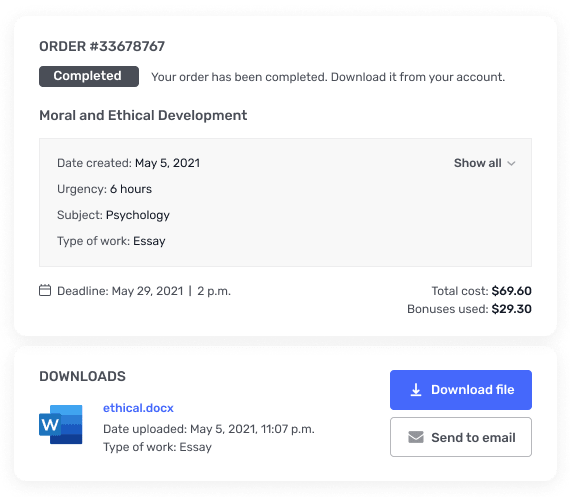In an article appearing in Today’s Health a writer
1. In an article appearing in Today’s Health a writer states that the average number of calories in a serving of popcorn is 75. To determine if the average number of calories in a serving of popcorn is different from 75, a nutritionist selected a random sample of 20 servings of popcorn and computed the sample mean number of calories per serving to be 78 with a sample standard deviation of 7.Compute the z or t value of the sample test statistic. A. z = 1.916 B. t = 1.916 C. t = -1.916 D. z = 1.6452.The form of the alternative hypothesis can be: A. two-tailed B. one or two-tailed C. one-tailed D. neither one nor two-tailed 3.Which of the following values is not typically used for ? A. 0.50 B. 0.10 C. 0.05 D. 0.014.You conduct a hypothesis test and you observe values for the sample mean and sample standard deviation when n = 25 that do not lead to the rejection of H0. You calculate a p-value of 0.0667. What will happen to the p-value if you observe the same sample mean and standard deviation for a sample size larger than 25? A. The p – value stays the same B. The p – value increases C. The p – value may increase or decrease D. The p – value decreases5.Results from previous studies showed 79% of all high school seniors from a certain city plan to attend college after graduation. A random sample of 200 high school seniors from this city reveals that 162 plan to attend college. Does this indicate that the percentage has increased from that of previous studies? Test at the 5% level of significance.What is your conclusion? A. Cannot determine B. More seniors are going to college C. Do not reject H0. There is not enough evidence to support the claim that the proportion of students planning to go to college is greater than .79. D. Reject H0. There is enough evidence to support the claim that the proportion of students planning to go to college is now greater than .79. 6.A type II error occurs when: A. the sample mean differs from the population mean B. the null hypothesis is incorrectly rejected when it is true C. the test is biased D. the null hypothesis is incorrectly accepted when it is false7.A type I error occurs when the:A. null hypothesis is incorrectly rejected when it is trueB. null hypothesis is incorrectly accepted when it is falseC. sample mean differs from the population meanD. test is biased8.The “Pizza Hot” manager commits a Type I error if he/she isA. switching to new style when it is no better than old styleB. staying with old style when new style is better C. staying with old style when new style is no better than old style D. switching to new style when it is better than old style9.The hypothesis that an analyst is trying to prove is called the:A. quality of the researcherB. alternative hypothesisC. elective hypothesisD. level of significance10.Results from previous studies showed 79% of all high school seniors from a certain city plan to attend college after graduation. A random sample of 200 high school seniors from this city reveals that 162 plan to attend college. Does this indicate that the percentage has increased from that of previous studies? Test at the 5% level of significance.What is the p-value associated with your test of hypothesis?A. 0.4874B. 0.2437C. 0.7563D. 0.687411.In an article appearing in Today’s Health a writer states that the average number of calories in a serving of popcorn is 75. To determine if the average number of calories in a serving of popcorn is different from 75, a nutritionist selected a random sample of 20 servings of popcorn and computed the sample mean number of calories per serving to be 78 with a sample standard deviation of 7.State the null and alternative hypotheses.A. H0: = 75, H1: ? 75B. H0: = 75, H1: > 75C. H0: 75, H1: < 75D. H0: 75, H1: > 7512.Accepted characters: numbers, decimal point markers (period or comma), sign indicators (-), spaces (e.g., as thousands separator, 5 000), “E” or “e” (used in scientific notation). NOTE: For scientific notation, a period MUST be used as the decimal point marker.Complex numbers should be in the form (a + bi) where “a” and “b” need to have explicitly stated values.For example: {1+1i} is valid whereas {1+i} is not. {0+9i} is valid whereas {9i} is not.A statistician wishes to test the claim that the standard deviation of the weights of firemen is greater than 25 pounds. To do so, she selected a random sample of 30 firemen and found s = 27.2 pounds.Assuming that the weights of firemen are normally distributed, if the statistician wanted to test her research hypothesis at the .05 level of significance, what is the critical value?Place your answer, rounded to 3 decimal places, in the blank. For example, 23.456 would be a legitimate entry. 13. Accepted characters: numbers, decimal point markers (period or comma), sign indicators (-), spaces (e.g., as thousands separator, 5 000), “E” or “e” (used in scientific notation). NOTE: For scientific notation, a period MUST be used as the decimal point marker.Complex numbers should be in the form (a + bi) where “a” and “b” need to have explicitly stated values.For example: {1+1i} is valid whereas {1+i} is not. {0+9i} is valid whereas {9i} is not.A statistician wishes to test the claim that the standard deviation of the weights of firemen is greater than 25 pounds. To do so, she selected a random sample of 20 firemen and found s = 27.2 pounds.Assuming that the weights of firemen are normally distributed, to test her research hypothesis the statistician would use a chi-square test. In that case, what is the computed test value?Place your answer, rounded to 3 decimal places, in the blank. For example, 23.456 would be a legitimate entry. 14.Accepted characters: numbers, decimal point markers (period or comma), sign indicators (-), spaces (e.g., as thousands separator, 5 000), “E” or “e” (used in scientific notation). NOTE: For scientific notation, a period MUST be used as the decimal point marker.Complex numbers should be in the form (a + bi) where “a” and “b” need to have explicitly stated values.For example: {1+1i} is valid whereas {1+i} is not. {0+9i} is valid whereas {9i} is not.At a university, the average cost of books per student has been $600 per student per semester. The Dean of Students believes that the costs are increasing and that the average is now greater than $600. He surveys a sample of 40 students and finds that for the most recent semester their average cost was $645 with a standard deviation of $75. What is the test value for this hypothesis test?Test value: Round your answer to two decimal places as necessary.15.Accepted characters: numbers, decimal point markers (period or comma), sign indicators (-), spaces (e.g., as thousands separator, 5 000), “E” or “e” (used in scientific notation). NOTE: For scientific notation, a period MUST be used as the decimal point marker.Complex numbers should be in the form (a + bi) where “a” and “b” need to have explicitly stated values.For example: {1+1i} is valid whereas {1+i} is not. {0+9i} is valid whereas {9i} is not.The CEO of a software company is committed to expanding the proportion of highly qualified women in the organization’s staff of salespersons. He believes that the proportion of women in similar sales positions across the country is less than 45%. Hoping to find support for his belief, he directs you to testH0: p .45 vs H1: p < .45.In doing so, you collect a random sample of 50 salespersons employed by his company, which is thought to be representative of sales staffs of competing organizations in the industry. The collected random sample of size 50 showed that only 18 were women.Compute the test value that you would use in conducting this test. Place your answer, rounded to 3 decimal places, in the blank. For example, -2.345 would be a legitimate entry. 16.Accepted characters: numbers, decimal point markers (period or comma), sign indicators (-), spaces (e.g., as thousands separator, 5 000), “E” or “e” (used in scientific notation). NOTE: For scientific notation, a period MUST be used as the decimal point marker.Complex numbers should be in the form (a + bi) where “a” and “b” need to
have explicitly stated values.For example: {1+1i} is valid whereas {1+i} is not. {0+9i} is valid whereas {9i} is not.A survey determines that mint chocolate chip is the favorite ice cream flavor of 6% of consumers. An ice cream shop determines that of 240 customers, 18 customers stated their preference for mint chocolate chip.Find the P-value that would be used to determine if the percentage of customers who prefer mint chocolate chip ice has increased at a 5% level of significance.P-value: Round your answer to four decimal places as necessary.17.Accepted characters: numbers, decimal point markers (period or comma), sign indicators (-), spaces (e.g., as thousands separator, 5 000), “E” or “e” (used in scientific notation). NOTE: For scientific notation, a period MUST be used as the decimal point marker.Complex numbers should be in the form (a + bi) where “a” and “b” need to have explicitly stated values.For example: {1+1i} is valid whereas {1+i} is not. {0+9i} is valid whereas {9i} is not.Suppose a firm that produces light bulbs wants to know whether it can say that its light bulbs typically last more than 1500 hours. Hoping to find support for their claim, the firm collects a random sample of n = 25 light bulbs and records the lifetime (in hours) of each bulb. The information related to the hypothesis test is presented below.Test of H0: 1500 versus H1: > 1500Sample mean 1509.5Sample standard deviation 24.27Assuming the life length of this type of lightbulb is normally distributed, what is the p-value associated with this test? Place your answer, rounded to 3 decimal places in the blank. For example, .123 would be a legitimate entry. 18.Sample evidence is statistically significant at the level only if the p–value is larger than . True False19.The p-value of a test is the smallest level of significance at which the null hypothesis can be rejected. True False20.A one-tailed alternative is one that is supported by evidence in either direction. True False




